Employee Assistance Programs – Underlying Message, We Care
Posted: October 24, 2017
When we talk about employee benefits, the first thing that comes to mind is health insurance, followed by dental, vision and life insurance. Then maybe, disability and a myriad of voluntary benefits such as cancer, heart and stroke or accident. Wait, how about retirement plans and long-term care. I may even venture to assume that if asked, an employer or employee may mention parking, a company car or cell phone before getting to an employee assistance program, if they even know what one is.
An employee assistance program (EAP) is an employee benefit program that assists employees with personal problems and/or work-related problems that may impact their job performance, health, mental and emotional well-being. EAPs generally offer free and confidential assessments, short-term counseling, referrals, and follow-up services for employees and their household members. EAP counselors also work in a consultative role with managers and supervisors to address employee and organizational challenges and needs. Many corporations, academic institution and/or government agencies are active in helping organizations prevent and cope with workplace violence, trauma, and other emergency response situations.
Some studies indicate that offering EAPs may result in various benefits for employers, including lower medical costs, reduced turnover and absenteeism, and higher employee productivity. Critics of these studies question the scientific validity of their findings, noting small sample sizes, lack of experimental control groups, and lack of standardized measures as primary concerns. Proponents, however, argue that the consistency of positive findings across studies in different service sectors denote at least some positive effect of programs, even if the most effective components of such programs have not been determined.
Adding employee assistance services has established business benefits, including increased productivity of employees and decreased absenteeism. Small businesses can especially benefit from EAP programs. Even though they may have fewer employees and may not see the need to implement an EAP program, small business owner’s bottom line can suffer quicker due to decreased performance and productivity and workplace negativity. A small company could be severely damaged if they do not seek effective measure to rectify such issues. An employer that provides an effective, full-service EAP can help both themselves and employees by lowering risk and liability and improving employee satisfaction.
The average annual per-employee cost of an EAP ranges from $12 to $40, representing less than one third of 1% of the average employers’ annual per-employee spending on health insurance at the high end of the market, according to reports by the Employee Assistance Society of North America and the Kaiser Family Foundation.
“One of the biggest problems surrounding EAPs is that employers generally don’t do a very good job communicating with their employees about the program,” said Bruce Elliott, compensation and benefits manager for the Alexandria, Va.-based Society for Human Resource Management. “A lot of employees simply aren’t aware that their company even has an EAP, or they’ve heard of it, but they don’t know who to call or how to use it.”
Experts said employees’ lack of information on the full range of services their employer’s EAP provides is a common deficiency.
“There still seems to be a pervasive sense among employees that EAPs are for very specific and discrete problems like substance abuse or management issues,” said Helen Darling, president and CEO of the Washington-based National Business Group on Health. “The message that EAPs really need to get across is that they’re a one-stop shop where employees can seek out help no matter what challenge they’re facing.”
For employers of all sizes, an employee assistance program can be a low cost, high return benefit, if implemented and communicated effectively. An easy way to say, “We care.”

